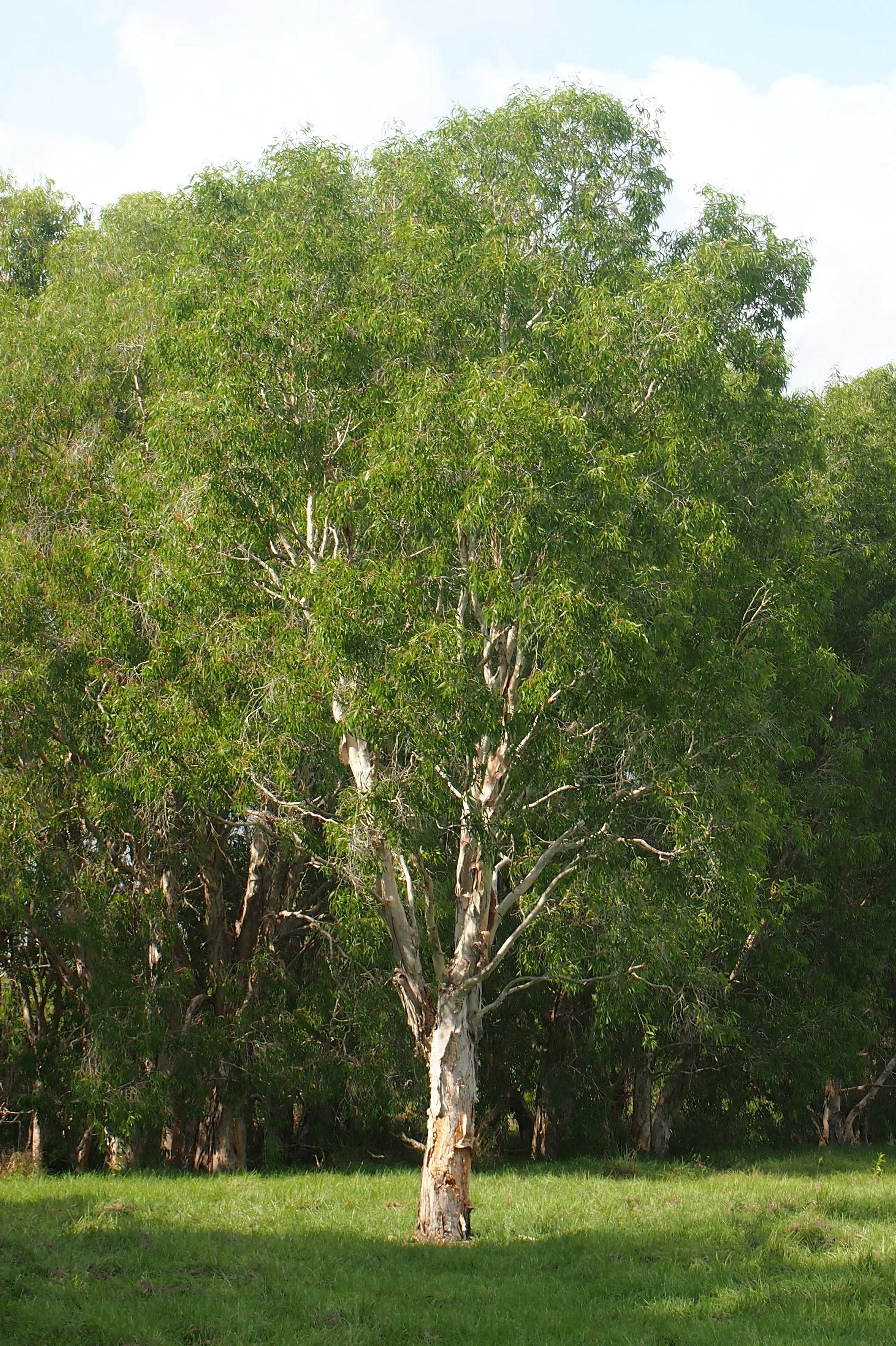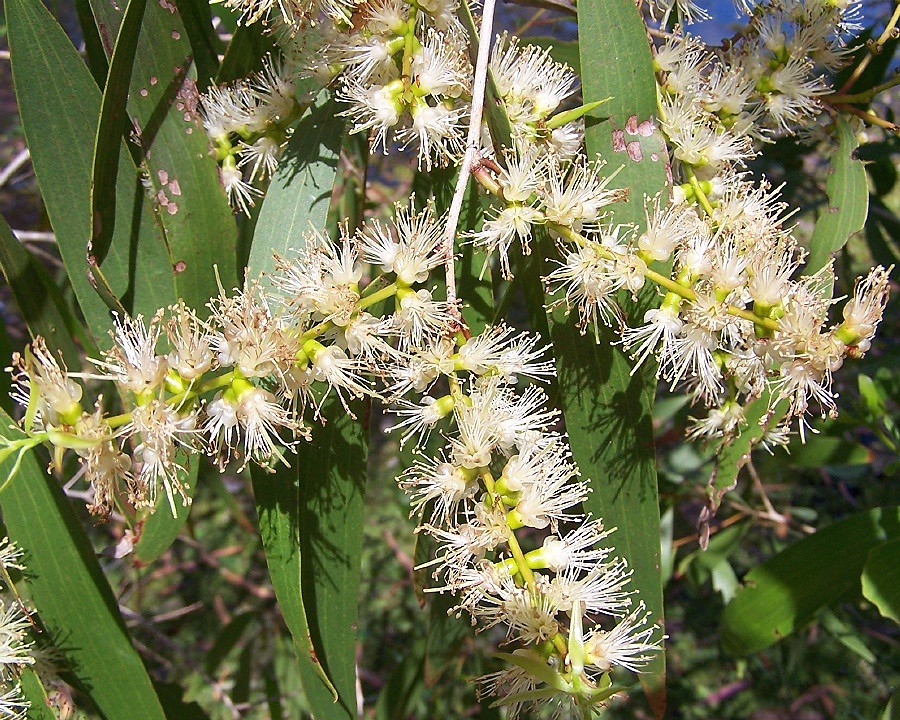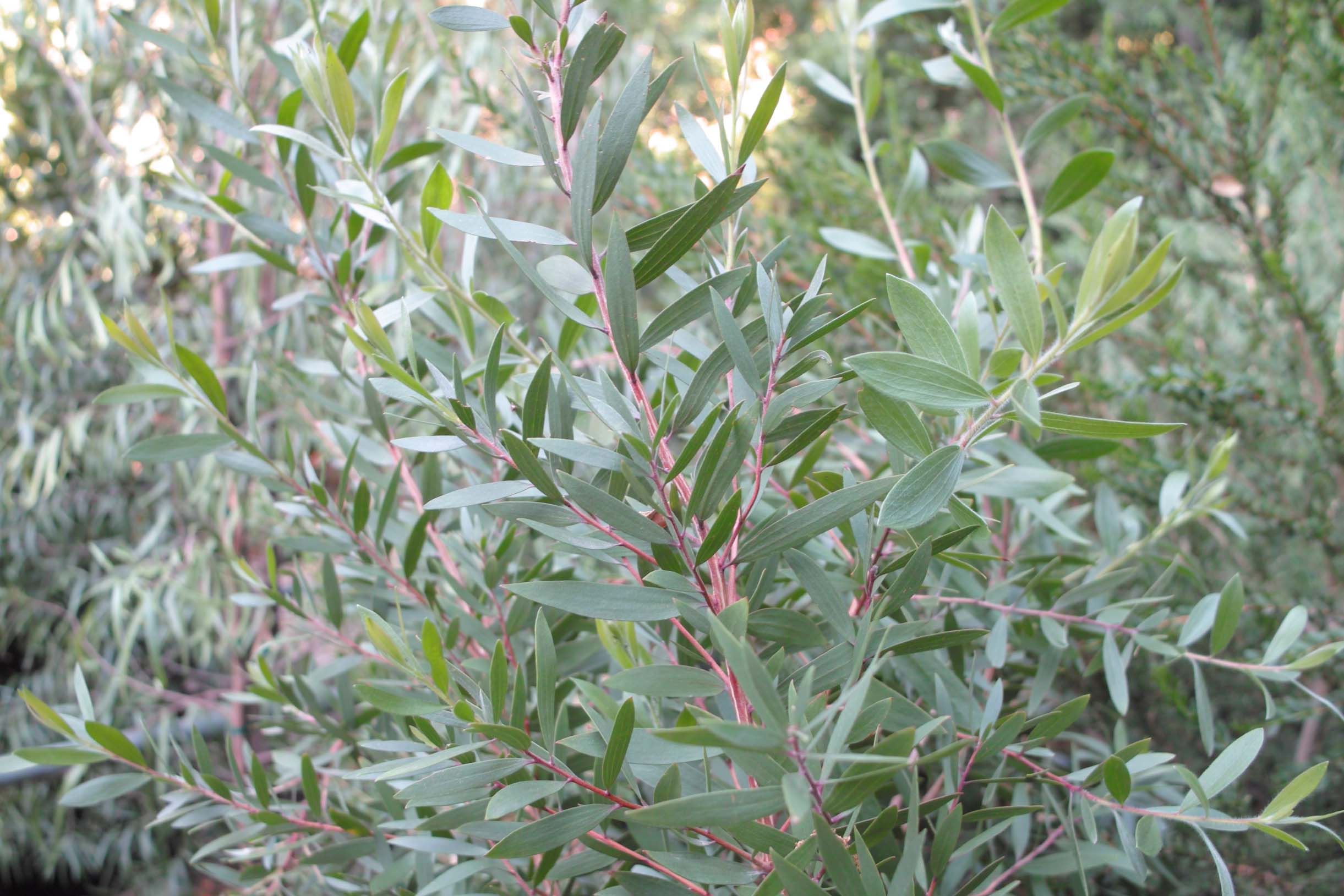Melaleuca leucadendra
Melaleuca leucadendra
Melaleuca leucadendra, also Silver Tree niaouli, Kajeputbaum called Cajeputbaum, is a species of the genus Melaleuca. It is in northern Australia (Western Australia, Northern Territory, Queensland) common and they are also found in the Solomon Islands and New Guinea. It is also cultivated outside this area.
Description
Melaleuca leucadendra is reached an evergreen tree, the growth heights of up to 10 to 15 (maximum 30 to 40) meters. Particularly striking is the characteristic for other Melaleuca species korkige, whitish bark. It consists of numerous paper-thin layers of which the outer irregular replace.
The alternate arranged, semi- drooping leaves are smooth, 6-12 cm long and brighter than that of Melaleuca quinquenervia. When rubbed, the leaves smell strongly aromatic.
The flowers are in pairs or groups of three closely spaced at 6 to 15 cm long inflorescences. The sessile, hermaphrodite flowers have a double perianth. The sepals are fused together into a bare calyx tube with 0.7 to 1.5 mm long, calyx lobes, the glands and a ciliated border have. The petals are white to cream-colored. Five to seven stamens are in a bundle.
There are sessile, woody, cup-shaped to cylindrical capsule fruits formed, which have a diameter of 3 to 4 mm. They contain tiny seeds.
Use
One gains from this type, the Cajeput oil (also Cajeput oil ). Meleuca is used by the Australian Aborigines for thousands of years. It is a proven skin care products from the Mexican Indians. The leaves are used in Southeast Asia as a spice ( as a whole leaf laurel ).
Taxonomy
1968 nine species were outsourced, for example, Melaleuca quinquenervia.









